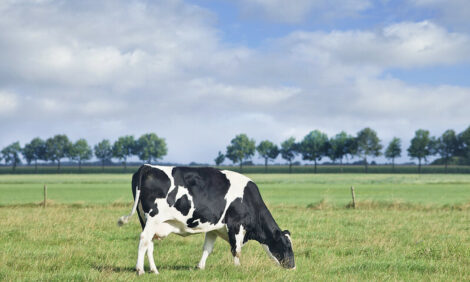



Research Model Shows Hazardous Antibiotic Levels in Environment
GERMANY - Several antibiotics could be present in hazardous levels in the environment after manure spreading, new research from sustainability scientists at Leuphana University of Lueneburg shows.The researchers, led by Jakob Menz, devised a simple computational predicting procedure for region-specific environmental risks caused by veterinary antibiotics.
This procedure makes use of utilisation patterns of antibiotics in animal husbandry.
It aggregates data from existing studies on the quantity and frequency of various antibiotics administered to the species treated. On this basis, the scientists modelled consumption patterns, which provide information about the concentration of antibiotics found in slurry.
Starting from the manure applied as fertiliser on fields, it is then possible to draw conclusions about the expected environmental impact of individual antibiotic substances in a given region.
Substances, which pose a particularly high risk to the environment because of their relatively large and frequent consumption, can be filtered out and specifically investigated in follow-up studies.
Thus, potential risks for humans and the environment can be identified before they occur and evaluated more closely.
In their case study of north-west Germany, the researchers drew on two studies carried out in 2007 and 2011 by the Lower Saxony State Office for Consumer Protection and Food Safety (LAVES) and the Federal Institute for Risk Assessment (BfR) on the use of antibiotics in livestock production.
"The results give rise to concern," explained Mr Menz, the study's lead author.
"Even assuming an average use frequency, environmental impacts cannot be ruled out."
According to their model, a total of 14 antibiotic substances can occur in potentially environmentally hazardous concentrations in the region surveyed.
The Federal Environment Agency estimates that two to three times as many antibiotics are administered in veterinary medicine as in human medicine. However, the lavish use of veterinary antibiotics bears substantial risks for humanity and the environment.
Livestock excrete a sizable part of these active substances untreated. Through the application of liquid manure or livestock grazing, these medical substances enter the soil, surface- and ground-waters.
This could lead to aiding the spread of antibiotic resistance, for example in the form of multidrug-resistant pathogens. It could also deteriorate naturally occurring microbial communities. In highly polluted soils, the latter could, in turn, contribute to a reduction in soil fertility.
For a long time, the availability of data on the actual amounts of antibiotics administered to livestock was restricted.
It is only since 2014 that German meat farming businesses must make regular reports to competent authorities about the nature and quantity of antibiotics they administer.
By improving the data base, the new procedure can, in the future, help implement detailed risk assessments and carry them out for other German regions. Moreover, it can easily be combined with models reaching further, which would also significantly simplify the prediction of antibiotics input in water.
The Leuphana scientists are already implementing this advanced application in a joint project with the Ministry for Climate Protection, Environment, Agriculture, Conservation and Consumer Protection of North Rhine-Westphalia. The project aims at sustainably reducing the contamination charge of surface waters with veterinary medicines in the catchment area of the Haltern Reservoir.
The researchers Professor Klaus Kuemmerer, Jakob Menz and Dr Mandy Schneider recently published this procedure together with a related case study on potential environmental contamination by veterinary antibiotics in north-west Germany in the Chemosphere journal.
TheCattleSite News Desk


